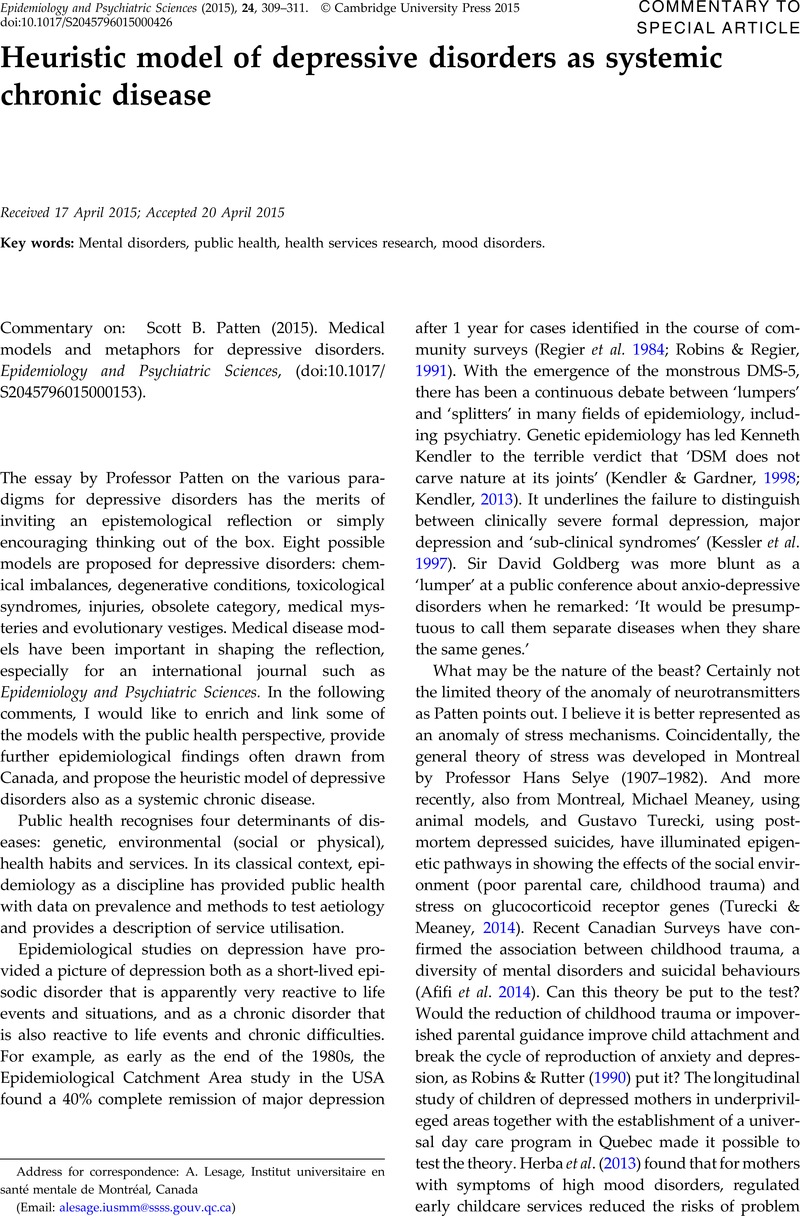Crossref Citations
This article has been cited by the following publications. This list is generated based on data provided by Crossref.
Schmitz, N
Deschênes, S S
Burns, R J
Smith, K J
Lesage, A
Strychar, I
Rabasa-Lhoret, R
Freitas, C
Graham, E
Awadalla, P
and
Wang, J L
2016.
Depression and risk of type 2 diabetes: the potential role of metabolic factors.
Molecular Psychiatry,
Vol. 21,
Issue. 12,
p.
1726.
Puyat, Joseph H.
Kazanjian, Arminee
Wong, Hubert
and
Goldner, Elliot
2017.
Comorbid Chronic General Health Conditions and Depression Care: A Population-Based Analysis.
Psychiatric Services,
Vol. 68,
Issue. 9,
p.
907.
Lesage, A.
2017.
Populational and individual perspective on needs.
Epidemiology and Psychiatric Sciences,
Vol. 26,
Issue. 6,
p.
609.
Schmitz, Norbert
Deschênes, Sonya S.
Burns, Rachel J.
Danna, Sofia M.
Franco, Oscar H.
Ikram, M. Arfan
Kivimäki, Mika
Singh-Manoux, Archana
and
Tiemeier, Henning
2018.
Cardiometabolic dysregulation and cognitive decline: potential role of depressive symptoms.
The British Journal of Psychiatry,
Vol. 212,
Issue. 2,
p.
96.
Fleury, Marie-Josée
Delorme, André
Benigeri, Mike
and
Vanasse, Alain
2019.
Utilisation et enjeux des données clinico-administratives dans le domaine de la santé
mentale et de la dépendance.
Santé mentale au Québec,
Vol. 43,
Issue. 2,
p.
21.
Guo, Michael Y.
Crump, R. Trafford
Karimuddin, Ahmer A
Liu, Guiping
Bair, Matthew J.
and
Sutherland, Jason M.
2022.
Prioritization and surgical wait lists: A cross-sectional survey of patient's health-related quality of life.
Health Policy,
Vol. 126,
Issue. 2,
p.
99.



